WWDC 2005 - Apple to Move to Intel Processors in 2006
by Anand Lal Shimpi on June 6, 2005 3:03 PM EST- Posted in
- Trade Shows
Steve talked about the two major challenges with the shift to x86:
At the conference, Apple released an updated version of their Xcode development suite. Xcode 2.1 will let you compile to both PowerPC and Intel architectures, creating a universal binary and allowing developers to ship one copy of software that supports both processors.
- Getting Mac OS X run on Intel
- Intel versions of Applications

OS X has been living a secret double life for the past 5 years.
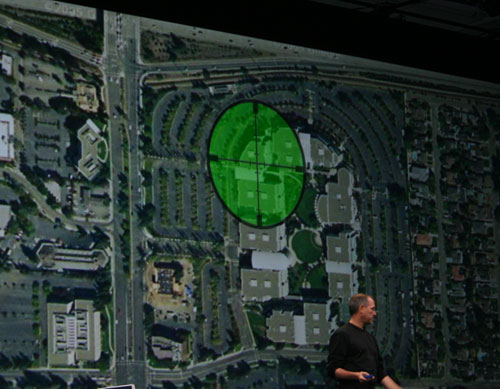
This picture highlights the building on Apple's Cupertino campus where x86 development has taken place for the past 5 years.
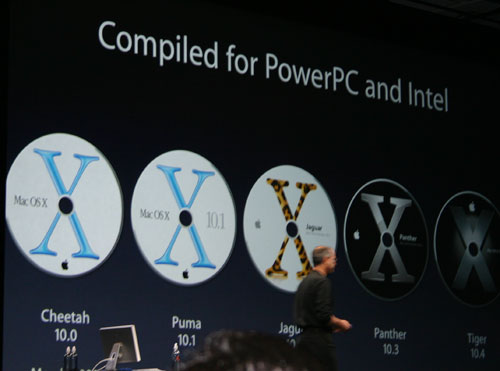
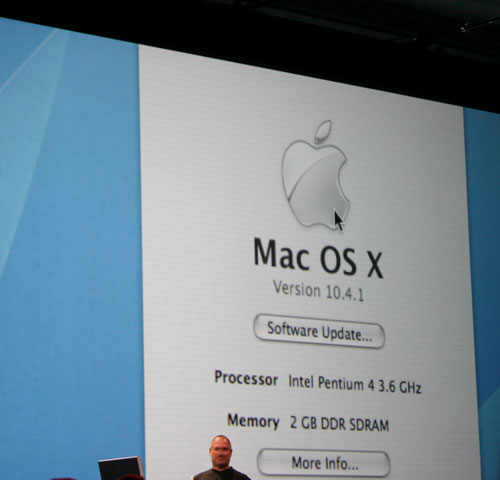
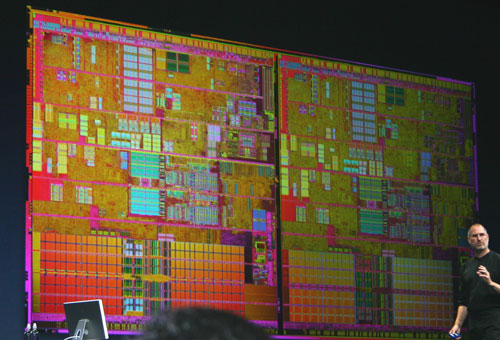
At the conference, Apple released an updated version of their Xcode development suite. Xcode 2.1 will let you compile to both PowerPC and Intel architectures, creating a universal binary and allowing developers to ship one copy of software that supports both processors.
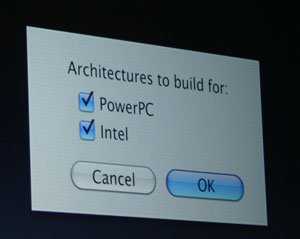
A checkbox in Xcode 2.1 will allow developers to create a universal binary that will run on both PPC and Intel platforms.
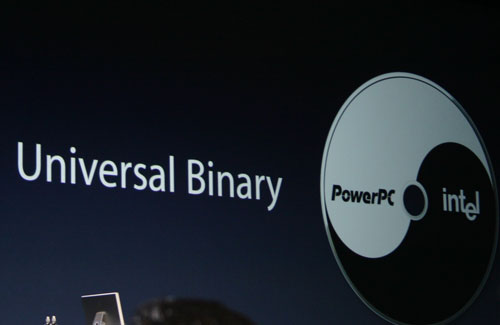

The transition in architectures will be an overlapping one.



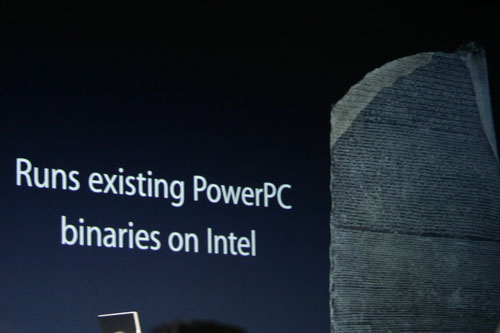

OS X (PowerPC) Photoshop running on an Intel OS X system using Rosetta.
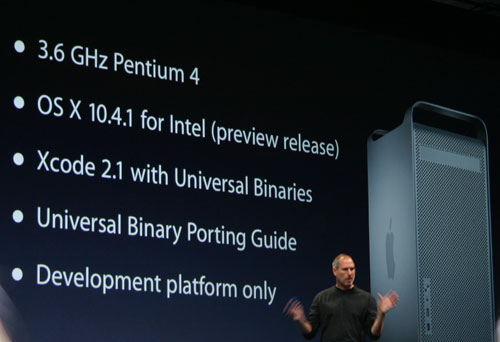
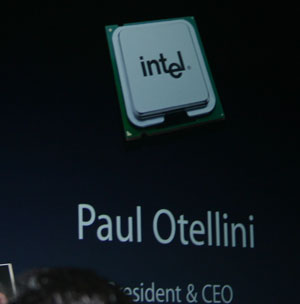

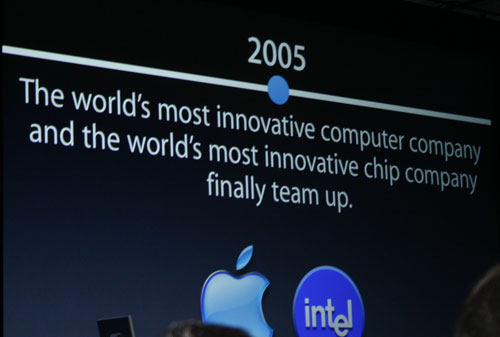
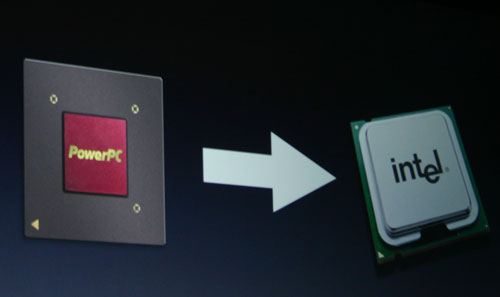










65 Comments
View All Comments
SilentRunning - Monday, June 6, 2005 - link
Lets see Apple gets intel CPU, and Intel finally gets a company willing to adopt their BTX standard (just a thought).PrinceXizor - Monday, June 6, 2005 - link
I knew AMD was in laptops, but I totally whiffed on the fact that they aren't in more mobile units. Good points.It would be interesting if you could buy an Apple MB (thus acquiring the appropriate BIOS/ROM) and a copy of OS X and then build your own computer around that? That would be kind of cool! (imo).
P-X
jediknight - Monday, June 6, 2005 - link
Well, my hopes were up after hearing this.. only to be quickly deflated:"However, Schiller said the company does not plan to let people run Mac OS X on other computer makers' hardware. "We will not allow running Mac OS X on anything other than an Apple Mac," he said."
(source: ZDNet.com)
ACK. Wasn't that the whole POINT of having MacOS on x86??! (at least, from an enthusiast POV)
ShinKen - Monday, June 6, 2005 - link
From what I read over at engadget, Apple will most likely use custom bios or something to let OS X know it ok to boot. Also it was mentioned that they would not prevent users from installing windows on apple hardware.wilburpan - Monday, June 6, 2005 - link
Two more reasons for choosing Intel over AMD:1. Multimedia performance. Currently, the one area where Intel chips have and edge seems to be multimedia applications. This may be an indicator of Apple's wish to continue to be the digital hub of your living room.
2. Notebooks. Unless I'm an idiot, the main use of AMD CPUs in notebooks have been in large 8-10 lb. desktop replacement notebooks. If Apple is to continue making small notebooks, Pentium M's have a long and impressive track record.
Speedo - Monday, June 6, 2005 - link
But it sure would have been a great opportunity for AMD to grow, if they had gotten the deal. But I agree with #6.One thing I wonder after reading the article, is if there would be a way for the x86 compiled OS X to run on a normal PC platform. But of course Apple doesn't want this to happen for obvious reasons, and so I guess they will make it impossible (no drivers for other than Apple hardware etc). But it would have been cool to dualboot between OS X and Longhorn :)
ProviaFan - Monday, June 6, 2005 - link
I have to ask, aside from driver support (or lack thereof), why wouldn't Apple make everything else proprietary? (particularly, the BIOS / firmware) Given their past trends, I doubt that there will be some hardware compatibility list that you could assemble a PC from that would be able to run OS X/x86.plewis00 - Monday, June 6, 2005 - link
Does it matter what CPU it actually is? Isn't x86 all pretty much the same, and AMD is pretty similar, should be compatible.I'm guessing they went with Intel because as much as you all hate to admit it, Intel has a lot more clout than AMD does now or in the foreseeable future...
Questar - Monday, June 6, 2005 - link
He said why he didn't use AMD:Performance per watt in 2006.
I'm sure apple knows more than you about Intel's 2006 processor plans.
PrinceXizor - Monday, June 6, 2005 - link
Why Intel?1. Because its Intel. Brand name. The defacto standard (whether you like it or not).
2. Price. I'm sure the price Apple is getting is better than what AMD can afford to give them.
3. Stability. Intel is hugely capable of being around for a LONG time.
4. Just because Prescott's are hotter than Athlon64's doesn't mean that they aren't cooler than equivalently performing PowerPC processors. Why do you think we DON'T have 3.0Ghz Power PC's?
5. Do you really think Intel doesn't KNOW they have a super hot chip in Prescott?
5b. Do you really think Intel is going to STAY hotter than AMD? (umm...original Athlon's anyone? They didn't stay space heaters forever).
5c. Do you really think we know more about Intel 's roadmap for the next 10 years including projected TDP than Apple does?
AMD may have the slight performance edge (currently by the way, merely currently) but Intel still produces a fine processor that will siginificantly improve the overall value of an Apple computer.
Its really quite easy to see why they would choose Intel over AMD.
I'm sure I'll be labeled a fanboi...but, my next processor choice will most likely be an AMD processor, so there :P~~~
:)
P-X